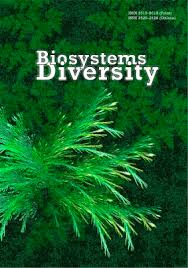Antibacterial effect of essential oils of two plants Eucalyptus camaldulensis and Artemisia herba alba on some bacterial strains
Antibacterial effect of essential oils of two plants Eucalyptus camaldulensis and Artemisia herba alba on some bacterial strains
Author(s): Hayette Bouabida, D. Dris, M. Houhamdi, H. FenghourSubject(s): Agriculture, Health and medicine and law, Sociobiology
Published by: Дніпропетровський національний університет імені Олеся Гончара
Keywords: yield; antibacterial activity; inhibitory effect; secondary metabolites; sensitivity; aromatogram test;
Summary/Abstract: Essential oils are secondary plant metabolites and have many therapeutic properties. The aim of our study is to determine the antibacterial effect of the essential oils of two plants cultivated in a semi-arid region located in the Northeast of Algeria (Tebessa), Eucalyptus camaldulensis (Myrtaceae) and Artemisia herba alba (Asteraceae). The yield of essential oils of the two plants were 1.45 ± 0.026 and 1.21 ± 0.061 g/100 g of the dry matter of the aerial part respectively. The test of the antibacterial effect is based on the diffusion method on solid medium (sensitivity), this method allows us to determine the susceptibility or resistance of an organism vis-à-vis the sample studied. Our study reveals that E. camaldulensis essential oil had very strong activity on all bacterial strains tested, except on Pseudomonas aeruginosa and Enterococcus faecalis for which there was no inhibitory effect. However, A. herba alba essential oil had very strong activity on all bacterial strains tested except on Pseudomonas aeruginosa. The MIC of Artemisia essential oil ranged between 0.08 and 1.57 µL/mL, with the lowest activity for S. aureus and P. mirabilis (1.57 µL/mL) and the highest activity was observed against E. feacalis, E. coli, and K. pneumonia (0.09 µL/mL). The MIC of the second plant EO ranged between 0.08 and 0.36 µL/mL, with the lowest activity for P. mirabilis (0.36 µL/mL) and the highest one was observed against S. saprophyticus and E. coli (0.08 µL/mL). Statistical analysis shows that the two plants have the same efficacy against S. saprophyticus while E. faecalis, K. pneumoniae and P. mirabilis species are affected more by the essential oil of A. herba alba. While, E. camaldulensis has a higher efficiency than that of A. herba alba on the species: S. aureus and E. coli. Therefore, the essential oils of E. camaldulensis and A. herba alba suggests avenues for further non clinical and clinical studies.
Journal: Biosystems Diversity
- Issue Year: 29/2021
- Issue No: 2
- Page Range: 73-77
- Page Count: 5
- Language: English

